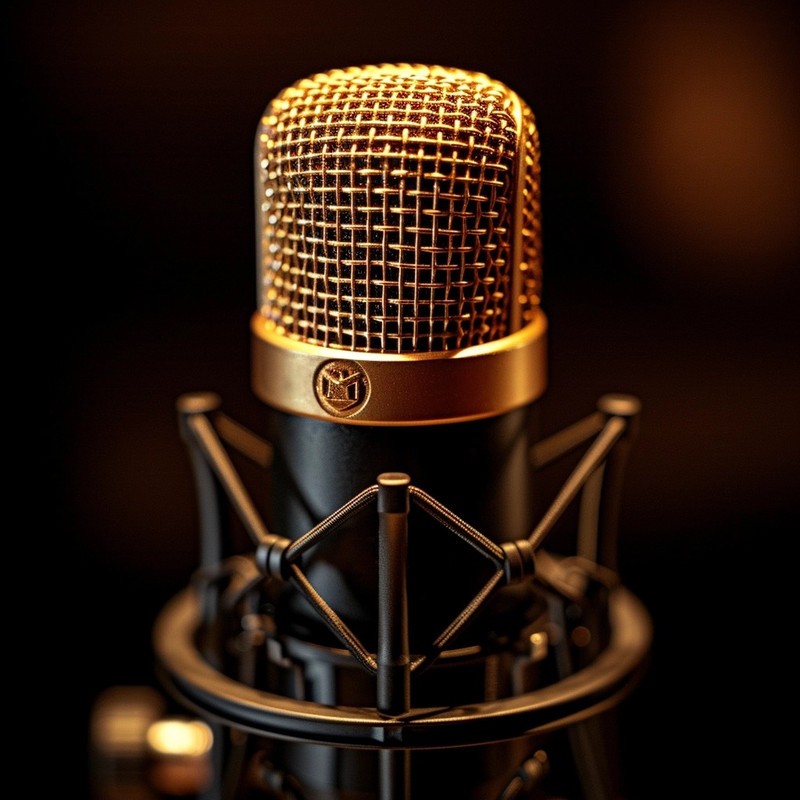

Yes, this stuff is useful at times, but you should always ask yourself if it works. This versatility makes it suitable for everything from intimate vocal sessions to room-filling orchestral recordings; however, its sensitivity might not be ideal in exceedingly loud environments. The C12 is a very similar product, but there are some notable differences. The best recording microphones by RODE, Shure and Audio-Technica are covered!
Cardioids excel in isolating sounds from one direction but beware of rear lobe sensitivity in supercardioids that may catch unwanted reflections. To find out which microphone to buy, check out the best studio microphones on SoundShockAudio.. Another contender, the AKG C414 XLII, offers multiple pickup patterns and a slightly elevated high-frequency response ideal for acoustic instruments' detail retrieval.
Moreover, technological advancements have brought USB microphones to the forefront as well due to their convenience in connectivity and portability. Singers often benefit from this setup, with a microphone placed slightly above their mouth angled downward, ensuring breaths don't collide directly with the diaphragm causing unwanted pops or hisses.
It captures the dynamics between quiet and loud and the harmonics unique to a valve amplifier.
One essential principle in microphone placement is understanding the proximity effect. This mic produces a smooth, natural sound that is perfect for studio recordings. However, opting for the least likely candidate every six words would be an unconventional approach. You can use it for toms, but you will need stands.
You'd be correct if you thought, "Hold on, doesn’t Telefunken make a C12 Reissue?" You'll sound like you, but better.
It ensures words glide smoothly into being without disruptive pops or hisses marring their emergence. The first thing you should ask yourself when purchasing audio equipment is: "What sound do I want here?"
The Lewitt Pure Tube is also a favorite because of its low-noise flooring, which allows us to layer and stack vocals without worrying about adding hiss. shock
Yet they also hold a valuable place in studio settings, particularly when recording instruments or vocals that require a warm, rich texture. Thus mastering microphone placement is less about following rigid rules but embracing an artful approach that weighs instrument characteristics against room attributes. This electrical signal travels along a cable and is sent to your recording interface, amplifier or desk. It can feel more natural to use it with your hand.
In podcasting, where the voice is often the sole vehicle for storytelling and engagement, clarity and warmth are essential. He is a video production expert with more than 15 years experience in podcasting.
The C636 is a design powerhouse, and its simple exterior in black, combined with its light weight, has earned it the title of 'Master Reference.' But, is this moniker deserved? Another advantage lies in their directional nature.
Moreover, consider diaphragm size: large-diaphragm condensers typically offer warmer tones perfect for voiceovers or singing; small-diaphragm ones provide more accurate representations of acoustic instruments' timbres.


Connectivity too poses considerations; XLR connections remain industry staples due to their robustness and balanced signal transmission capabilities. Microphone outputs are notoriously feeble; their signals often resemble delicate breezes rather than mighty gusts needed for professional recordings. Key Features of Top-Notch Studio MicrophonesWhen embarking on the quest for impeccable sound, delving into the domain of studio microphones is pivotal. Supercardioid microphones are more sensitive to sounds coming from the front, and have a smaller pickup field than cardioid microphones.
Cutting-edge microphones designed for these environments minimize background noise while ensuring speakers' voices are heard loud and clear. We can't pick just one or two to call 'the best.' Instead, we will highlight a few that impressed us.
Imagine a finely crafted microphone as a sensitive artist, capable of capturing every nuance in a vocalist's performance or the subtle timbre of an instrument. It can be used on almost anything but is particularly effective on overheads and kicks. They have a clear and natural midrange and a top end that is open and natural. The output of a powerful sound system is worthless if it doesn't deliver, and in this case the sound does.
A second potential problem with the proximity effects is that people are hopeless when it comes to consistently speaking into a mic from the same distance. These are not mere hues; they are tools to sketch audio landscapes.
Before you look at our list, make sure that you know the differences between microphone types. The British Broadcasting Company launched the 4038 microphone in 1952, after years of development and testing.
Every day is a great day when you have the SM7B with you. recording vocals

The venerable XLR connector remains a staple in professional studios due to its balanced audio capabilities and reliability. We've selected microphones that fit a range of budgets and abilities. The e-609, as with most Sennheiser microphones, is voiced to provide detailed clarity. The large diaphragm is a condenser microphone that promises to deliver a superlative vocal performance.
The variables of room acoustics, microphone characteristics, and personal artistic flavor mean that sometimes breaking these “best practices” might yield uniquely brilliant results. Diverse microphones excel in various applications.
The microphone that began as a wager The MD 441 is the first of Sennheiser's dynamic classics. Strategic thinking is also important.
Look at frequency response tailored to your needs.4.
Careful consideration is needed when seeking out wireless solutions to ensure they meet professional standards. In stark contrast, premium microphones are like time-honored wines; they possess character and depth that enhance over time. Some mics boast advanced shock mounts that decouple the mic from physical vibrations, ensuring that incidental contact does not translate into audible interference. These mics serve as a beacon for budding artists, podcasters, and home studio enthusiasts who yearn to produce content with professional sheen while navigating budgetary constraints.
Modern advancements have fortified these once-delicate devices against higher sound pressure levels and transient spikes, broadening their versatility in various recording scenarios. These mics are adept at capturing a wide frequency range with a flattering presence boost that breathes life into vocals and acoustic instruments alike.
This means that it is less finicky about the preamp requirements than other ribbon microphones. Microphone selection remains subjective; it must align with both artist preferences and specific sonic goals.
When paired correctly, they form an indispensable duo that lays down a solid foundation for capturing impeccable audio.
Whitney Houston, known for her powerful and emotive voice, often recorded with high-quality studio microphones. One of the microphones she famously used is the Neumann U87, renowned for its versatility and ability to capture the nuances of vocal performances with clarity and detail. This microphone is a favorite among many professional recording artists and engineers for its warm sound and reliability.
In professional audio, condenser microphones and dynamic microphones are commonly used. Condenser microphones are favored for their sensitivity and wide frequency response, making them ideal for studio recording and capturing vocals and acoustic instruments. Dynamic microphones, on the other hand, are known for their durability and ability to handle high sound pressure levels, making them suitable for live performances and recording louder sources like drums and electric guitars.
Paul McCartney has been seen using a variety of microphones throughout his career, both on stage and in the studio. Notably, he has frequently used the Shure SM58 for live performances, a microphone renowned for its durability and sound quality. In studio settings, he has been known to use the Neumann U47, a vintage microphone prized for its warmth and clarity.
Frank Sinatra famously used the Neumann U47 microphone in the studio for many of his recordings. This microphone is renowned for its warmth and clarity, which helped in capturing the rich tones of Sinatra's voice, contributing significantly to the iconic sound of his music.
The choice between a dynamic or condenser mic for vocals depends on the specific needs and environment. Condenser mics are generally preferred for studio recordings due to their sensitivity and ability to capture a wide range of frequencies and nuances in vocals. Dynamic mics, on the other hand, are more durable and better suited for live performances where background noise and feedback rejection are important.
Billie Eilish, along with her brother and producer Finneas, primarily uses the Audio-Technica AT2020 cardioid condenser microphone for much of their recording work. This affordable yet high-quality mic has been a part of their setup, especially during the early stages of their career, contributing to the intimate and detailed sound in Billie's music.